This article was co-authored by Shira Tsvi. Shira Tsvi is a Personal Trainer and Fitness Instructor with over 7 years of personal training experience and over 2 years leading a group training department. Shira is certified by the National College of Exercise Professionals and the Orde Wingate Institute for Physical Education and Sports in Israel. Her practice is based in the San Francisco Bay Area.
There are 12 references cited in this article, which can be found at the bottom of the page.
This article has been viewed 20,939 times.
Lower back strain is the most common cause of lower back pain. It can occur gradually, from overuse, or come on suddenly from injury. Most lower back strain can be treated using non-invasive at home methods. Use ice, heat, or both, and consider taking an over-the-counter medication. Rest in comfortable positions. Walking and stretching will help you heal, and exercising will strengthen your core so that you prevent future injuries. Consider getting a massage to relieve your pain. Visit your doctor if your pain is intense, lasts longer than a week, or travels to other parts of your body.
Steps
Treating a Sprain at Home
-
1Ice your back to reduce swelling. Wrap a bag of ice or reusable frozen gel packs in a cloth, and apply it to your injured lower back. This should reduce swelling and pain. Keep your strained muscles cool for 15-20 minutes at a time, then remove the ice for at least that long.[1]
- Some experts suggest icing for the first 24 hours, then switching to heat.
- However, experts disagree over the efficacy of ice or heat for an injured back, so feel free to use the method that feels best to you.
-
2Apply heat for spasms, stiffness, and pain relief. Heat does not reduce swelling, but it is more effective at relieving stiffness than ice, and some people find it more effective at relieving pain. Apply a heating pad wrapped in a cloth, or use it through 1 or 2 layers of clothing.[2]
- Apply for 15-20 minutes, then remove for at least that long.
- Never fall asleep with an electric heating pad against your skin.
Advertisement -
3Take over-the-counter drugs to reduce pain and swelling, as needed. Take NSAIDs according to the instructions on the label. Never exceed the recommended amount.[3]
- If you cannot take NSAIDs, make an appointment with your doctor to explore alternatives.
-
4Get a massage to help relax. Massage is a helpful form of pain-relief that can lead to better long-term back comfort. Ask your masseuse to focus on the quadratus lumborum (QL) and the gluteus medius.[4]
- Only go to an experienced masseuse who is familiar with back injuries. An inexperienced masseuse can re-injure you.
Stretching and Exercising Your Lower Back
-
1Take short walks each day. While complete bedrest might feel like the safest response to a lower back strain, it can actually worsen your back pain. Walk and move through your day as you normally do, stopping if anything worsens the pain.[5]
- Walk 10 to 15 minutes a day at first and work up to more.
-
2Perform press-ups twice a day. Lie on your belly in push-up position, with your palms on the floor. Relax the lower half of your body entirely. Press your hands to the floor and straighten your arms. Breathe, then slowly bend your arms and lower yourself to the floor.[6]
- Be careful not to tighten or lift your hips as you do this exercise. Let your arms and shoulders do all the work.
- Do this twice a day, 8-10 times. Go slowly, and take pauses if it is painful or tiring.
-
3Arch your back for a gentle stretch. While standing, put your hands over the tops of your buttocks, look at the ceiling, and arch your back. Relax, then repeat.[7]
- Do 8-10 reps of this in the morning and the evening when you do your other stretches.
EXPERT TIPShira Tsvi is a Personal Trainer and Fitness Instructor with over 7 years of personal training experience and over 2 years leading a group training department. Shira is certified by the National College of Exercise Professionals and the Orde Wingate Institute for Physical Education and Sports in Israel. Her practice is based in the San Francisco Bay Area.Personal Trainer & Fitness Instructor
 Shira Tsvi
Shira Tsvi
Personal Trainer & Fitness InstructorTry to stretch the area before doing exercise. The stretches and exercise you do should depend on why your lower back hurts, whether it was an injury, and what muscles work and don't work. Some movements are better than others for specific types of lower back pain.
-
4Perform bird-dog if you feel able. Get onto the floor on your hands and knees, with your hands positioned under your shoulders, and your knees under your pelvis. Keep your neck and head in line by looking down at the floor in front of your hands. Tighten your core and straighten your back.
- Extend one arm and the opposite leg simultaneously, until they are in the air parallel with your body. For instance, lift your left arm and right leg.[8]
- Slowly lower them to the ground.
- Repeat with the other arm and the other leg.
-
5Sign up for a gentle exercise class when you are feeling up to it. As your injury heals, work to strengthen your core by getting into a regular exercise routine. It may be beneficial to study yoga or pilates. Seek out an experienced instructor, and when possible opt for a class that mentions lower back strain in the description.[9]
- Yoga focuses on mental relaxation as well as physical stretching, so it can be useful in addressing the mental aspects of coping with lower back pain. Try Iyengar yoga, Viniyoga, or a class that is specifically designed for back pain.
Getting Medical Care
-
1Seek immediate care if you exhibit serious symptoms. If you are in serious pain, or if your pain is constant (not affected by movement), or if the pain moves (traveling down your leg, moving elsewhere in your back), visit your doctor. Contact your doctor if you experience the following:[10]
- Being unable to stand or walk
- Having a temperature over 101.0°F (38.3°C)
- Urinating frequently, painfully, or with blood
- Experiencing abdominal pain
- Having a "stabbing" pain anywhere in your body
- Pain, weakness, or numbness in your leg
- Pain that lasts more than a week without decreasing
- If you feel pain moving down your leg, or if you are in pain and have a fever, leg weakness, genital numbness or loss of control of your urine, see a doctor immediately.
-
2Submit to testing that your doctor recommends. In most cases, your doctor will examine you without advising any specialized tests. However, if your doctor is concerned about your symptoms, they may want to examine your back using an X-Ray, MRI, radionuclide bone scan, or electromyogram (EMG). Submit to the tests that your doctor advises, or ask for a second opinion.[11]
-
3Attend physical therapy if recommended by your doctor. Physical therapy is one of the most effective interventions for a back injury. Your physical therapist can also treat you stretches and exercises that will help you prevent strengthen your core and prevent future back pain. Ask your doctor for a referral to a physical therapist if you think it will help.[12]
- If physical therapy is not covered by your insurance, and you cannot pay out of pocket, consider enrolling in local pilates or yoga courses with experienced teachers.
-
4Take medication as prescribed. For a serious back injury, your doctor may prescribe opioids, muscle relaxants, or antidepressants. Take your medication as prescribed, and exercise caution if you have a history of addiction.[13]
- Opioids, such as oxycodone or vicodin, can be very helpful in relieving pain. If you fear addiction, however, ask for an alternative.
- Muscle relaxants will reduce pain and muscle spasms but may make you drowsy. If you work operating heavy machinery, discuss alternatives with your doctor.
- Sometimes doctors prescribe antidepressants, such as duloxetine, or anticonvulsants, such as gabapentin, to manage lower back pain. Discuss these options with your doctor to see if they are right for you.
-
5Consider a cortisone shot only if medication is not relieving your pain. Back strain is not normally treated with cortisone, so this is not a likely option. Cortisone shots don't help everyone, and they come with risks, so only accept them if your doctor advises it.[14]
- A cortisone shot will provide steroidal pain-relief to your damaged back.
- If your back injury comes from a ruptured disc or other cause of nerve pain, your doctor is more likely to suggest a cortisone shot.
- Never get more than 4 cortisone shots per year in any one region of your body, as it can cause nearby tissues to break down.
-
6Avoid back surgery. Back surgery is helpful for spinal deformities and bone fractures, but the benefits for an ordinary back injury for back strain are low to nonexistent. If your doctor recommends back surgery for a sprain, strain, or sciatica, get a second opinion.[15]
References
- ↑ https://www.health.harvard.edu/pain/hot-or-cold-for-back-pain
- ↑ https://www.health.harvard.edu/pain/hot-or-cold-for-back-pain
- ↑ https://www.spine-health.com/treatment/pain-medication/nsaids-non-steroidal-anti-inflammatory-drugs
- ↑ https://www.spine-health.com/blog/getting-right-massage-low-back-pain
- ↑ https://www.everydayhealth.com/pain-management/back-pain/dos-donts-lower-back-pain-exercises/
- ↑ https://www.everydayhealth.com/pain-management/back-pain/dos-donts-lower-back-pain-exercises/
- ↑ https://www.everydayhealth.com/pain-management/back-pain/dos-donts-lower-back-pain-exercises/
- ↑ https://health.usnews.com/wellness/fitness/articles/2018-05-18/the-6-best-exercises-to-ease-back-pain
- ↑ https://www.ncbi.nlm.nih.gov/pmc/articles/PMC2684152/
- ↑ https://www.hopkinsmedicine.org/healthlibrary/conditions/adult//mens_health/lumbar_strain_85,P00947
- ↑ https://www.hopkinsmedicine.org/healthlibrary/conditions/adult//mens_health/lumbar_strain_85,P00947
- ↑ https://www.npr.org/sections/health-shots/2018/05/23/613500084/trying-physical-therapy-first-for-low-back-pain-may-curb-use-of-opioids
- ↑ https://www.health.harvard.edu/pain/the-best-meds-for-back-pain
- ↑ https://www.health.harvard.edu/pain/back-pain-what-you-can-expect-from-steroid-injections
- ↑ http://www.jabfm.org/content/22/1/62.full.pdf+html
- ↑ https://www.ncbi.nlm.nih.gov/pubmed/11322842
About This Article
If you’ve strained your lower back, put ice on it right away to bring down the pain and swelling. Leave the ice pack on for about 15 to 20 minutes at a time, then take it off for at least that long to prevent ice burns. After 24 hours, switch to a heating pad or hot water bottle to relieve spasms and stiffness. You can also leave a heating pad on for 15 to 20 minutes at a time. Pain relieving medications, such as ibuprofen or naproxen, can also help keep pain and inflammation under control. A gentle massage might also help relieve tension and loosen up your muscles. For more expert tips, like how to reduce back pain with stretches and exercise, scroll down!
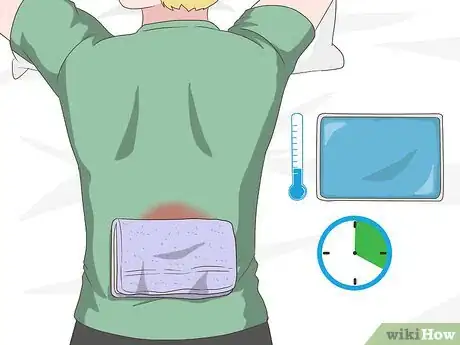

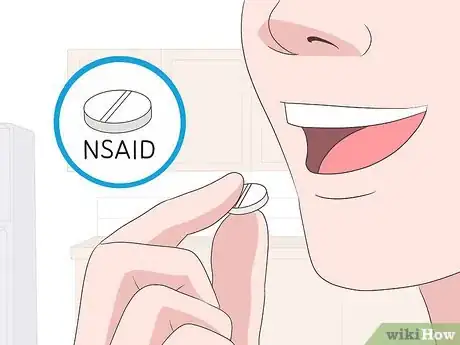
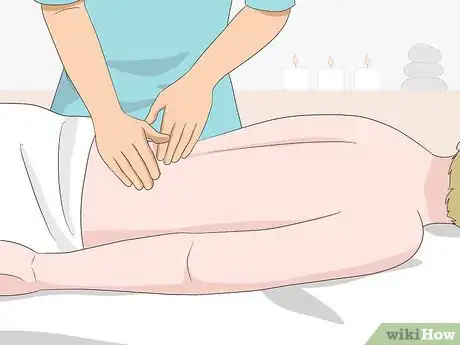

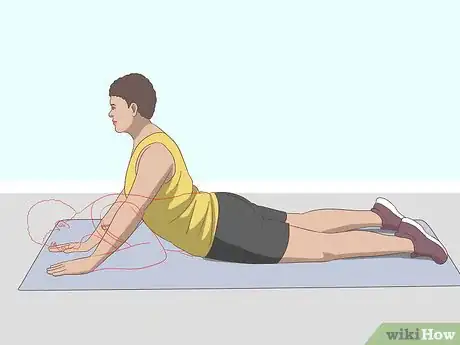
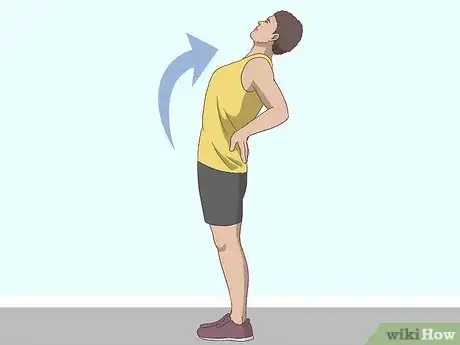



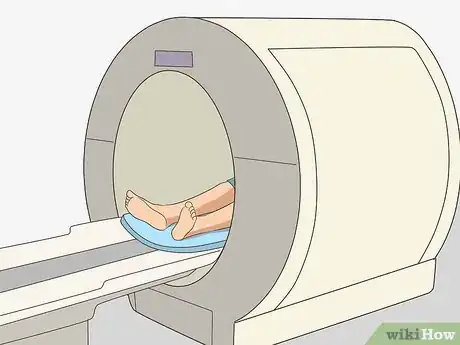

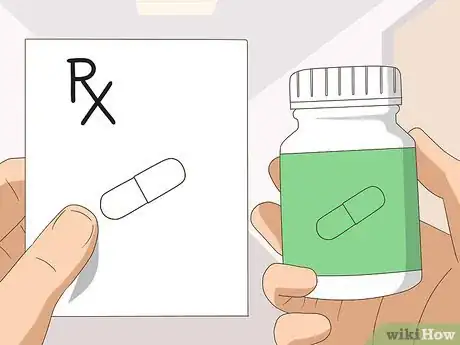

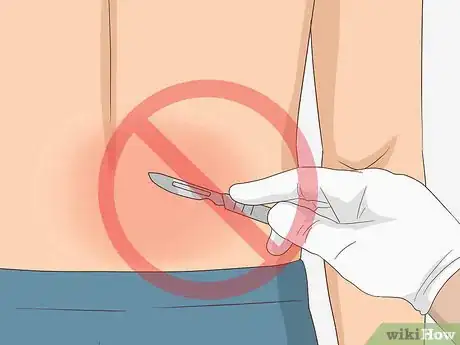
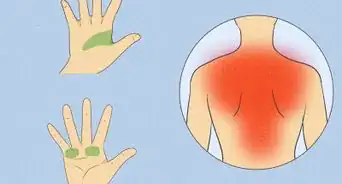
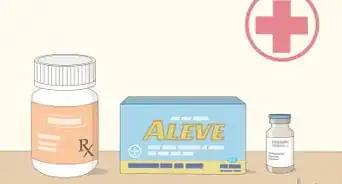
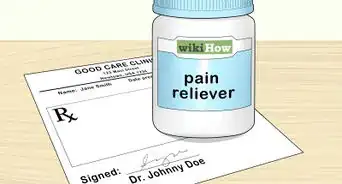



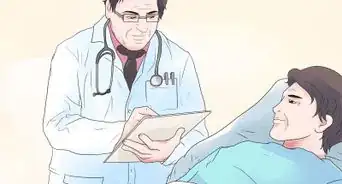
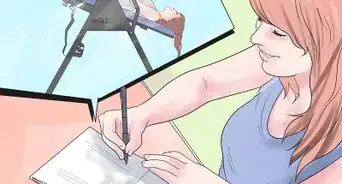
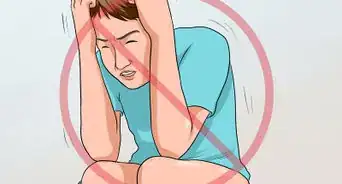

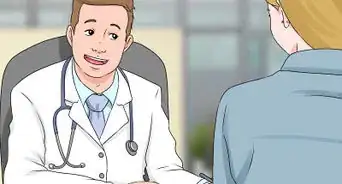
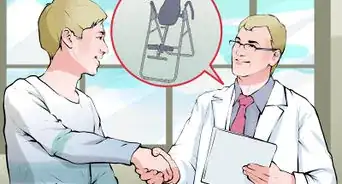
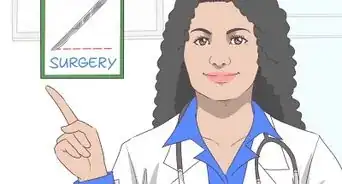
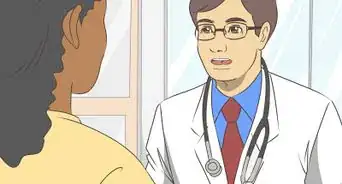






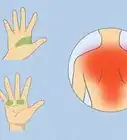
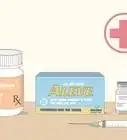

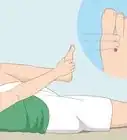



































Medical Disclaimer
The content of this article is not intended to be a substitute for professional medical advice, examination, diagnosis, or treatment. You should always contact your doctor or other qualified healthcare professional before starting, changing, or stopping any kind of health treatment.
Read More...